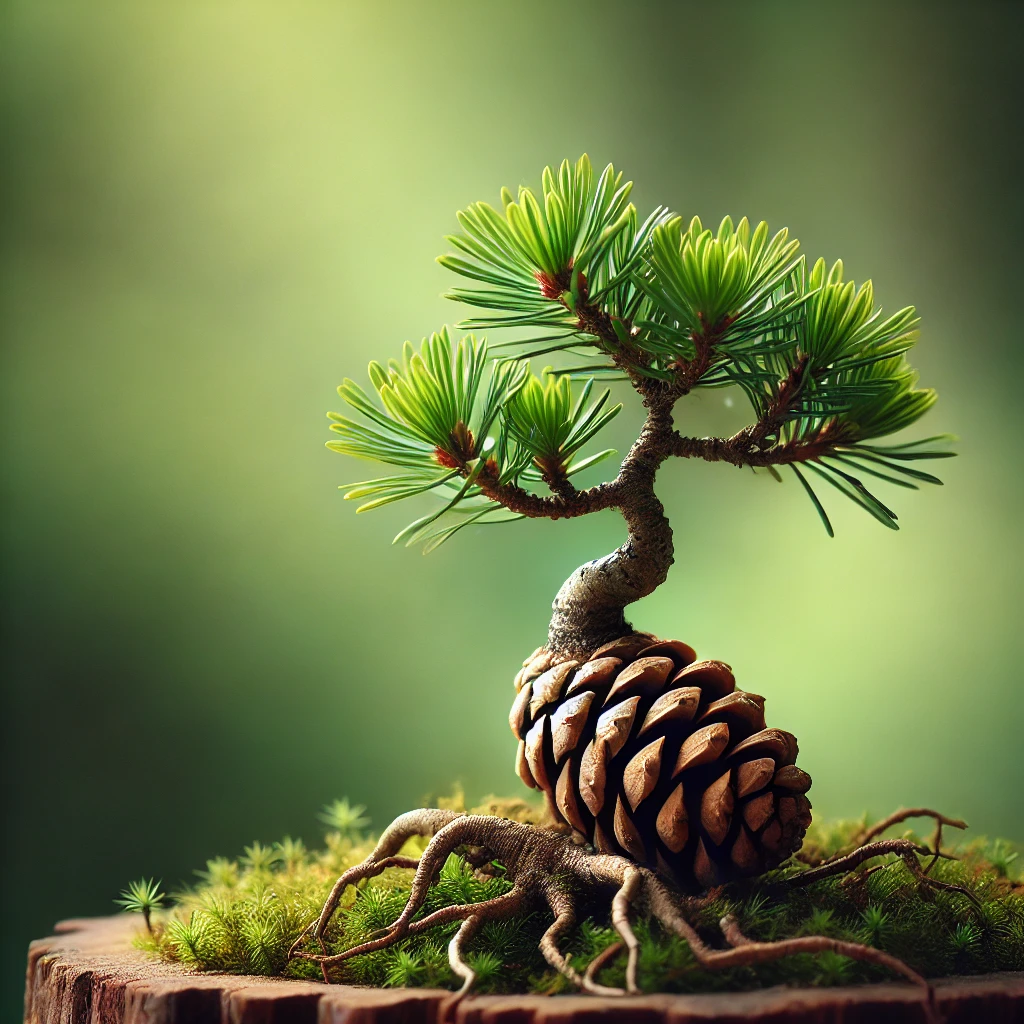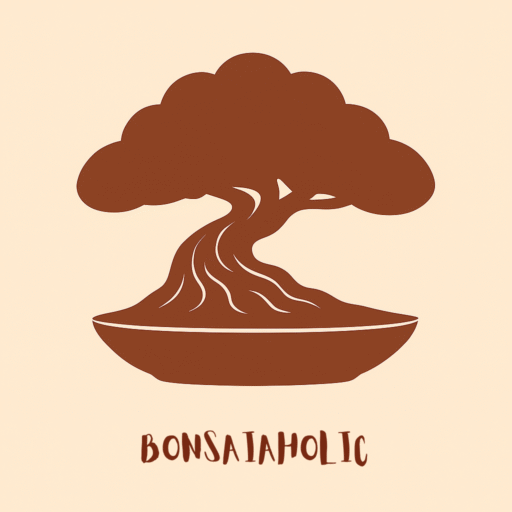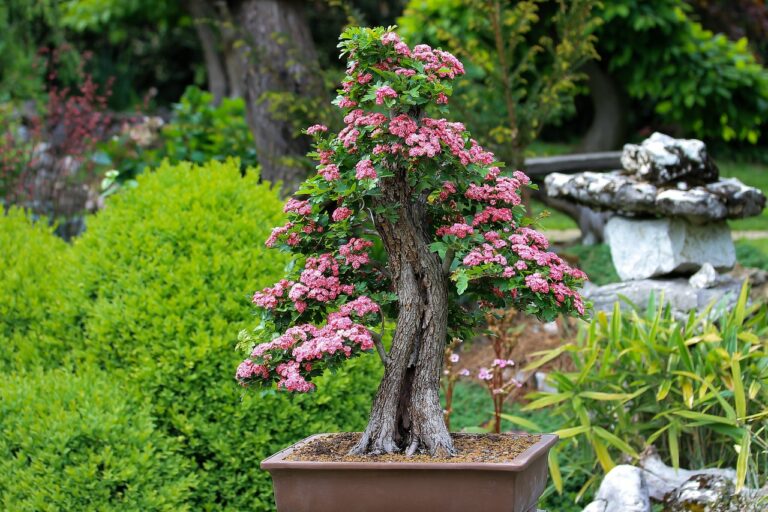How to Grow a Bonsai Pine Tree from a Pine Cone
Bonsai trees are a beautiful blend of art and nature, offering a sense of tranquility and a connection to the natural world. Among the many varieties of bonsai, the pine bonsai stands out for its elegance and symbolism of longevity. But did you know you can grow a bonsai pine tree from a pine cone? This unique process is rewarding and a fascinating way to connect with nature. In this guide, we’ll explore everything you need to know about growing a bonsai pine tree from a pine cone, pine needle, or seed, along with tips for care and maintenance.
Why Grow a Bonsai Pine Tree?
Pine trees are a popular choice for bonsai enthusiasts due to their hardy nature, evergreen foliage, and symbolic meaning. Whether you’re starting from a pine cone, pine needle, or nursery stock, cultivating a pine bonsai is a fulfilling journey that requires patience and dedication. Plus, the process of nurturing a tiny tree into a miniature masterpiece is both therapeutic and inspiring.
How to Grow a Bonsai Pine Tree from a Pine Cone
Step 1: Collecting Pine Cones
Start by finding healthy pine cones from a mature pine tree. Look for cones that are fully developed and free from damage. Collect them in late summer or early autumn when they naturally fall from the tree.
Step 2: Extracting Seeds
Gently open the pine cone to extract the seeds. Place the cone in a warm, dry area to encourage it to open naturally. Once the seeds are released, clean them and remove any debris.
Step 3: Stratification
Pine seeds require a period of cold stratification to germinate. Place the seeds in a damp paper towel, seal them in a plastic bag, and store them in the refrigerator for 4-6 weeks. This mimics winter conditions and prepares the seeds for sprouting.
Step 4: Planting the Seeds
After stratification, plant the seeds in a well-draining bonsai soil mix. Place the pot in a sunny location and keep the soil moist but not waterlogged. Germination can take several weeks, so be patient.
Step 5: Early Care
Once the seedlings emerge, provide them with plenty of sunlight and water. As they grow, you can begin shaping them using bonsai techniques like wiring and pruning.
Growing a Bonsai Pine Tree from Pine Needles
While growing a bonsai pine tree directly from pine needles isn’t possible, you can propagate pine trees from cuttings, which often include needles. Here’s how:
- Take Cuttings: Select healthy, young shoots with needles from a pine tree.
- Prepare the Cuttings: Remove the lower needles and dip the cut end in rooting hormone.
- Plant the Cuttings: Place the cuttings in a well-draining soil mix and keep them in a humid environment.
- Monitor Growth: Roots should develop in a few months. Once established, you can begin training the tree as a bonsai.
Types of Pine Bonsai Trees
There are several types of pine trees suitable for bonsai, each with unique characteristics:
- Japanese Black Pine (Pinus thunbergii): Known for its rugged bark and dark green needles.
- Japanese White Pine (Pinus parviflora): Features soft, bluish-green needles and a graceful appearance.
- Scots Pine (Pinus sylvestris): A hardy species with twisted trunks and vibrant green needles.
- Five-Needle Pine (Pinus pentaphylla): A delicate variety with clusters of five needles.

Caring for Your Bonsai Pine Tree
Light and Temperature
Pine bonsai trees thrive in full sunlight. Place your tree outdoors where it can receive at least 6 hours of direct sunlight daily. Protect it from extreme cold or heat.
Watering
Water your bonsai pine tree when the soil feels slightly dry. Avoid overwatering, as pines prefer well-draining soil.
Pruning and Wiring
Regular pruning helps maintain the tree’s shape and encourages new growth. Wiring can be used to guide branches into desired positions.
Fertilizing
Feed your bonsai pine tree with a balanced fertilizer during the growing season (spring to autumn). Reduce feeding in winter when the tree is dormant.
Common Challenges and Solutions to Grow a Bonsai Pine Tree from a Pine Cone
- Yellowing Needles: This could indicate overwatering or poor drainage. Adjust your watering schedule and ensure the soil drains well.
- Pests: Watch for aphids, spider mites, and scale insects. Treat infestations with insecticidal soap or neem oil.
- Slow Growth: Ensure your tree is getting enough sunlight and nutrients.
Conclusion: How to Grow a Bonsai Pine Tree from a Pine Cone
Growing a bonsai pine tree from a pine cone, pine needle, or seed is a rewarding experience that combines artistry and horticulture. With patience and proper care, you can transform a tiny seed into a stunning miniature tree that brings beauty and serenity to your space. Whether you’re a seasoned bonsai enthusiast or a beginner, this journey is sure to deepen your appreciation for nature and the art of bonsai.
Ready to start your bonsai journey? Share your progress with us in the comments below or explore our page for more bonsai tips and tricks!
FAQs
1. Can you grow a bonsai pine tree from a pine cone?
Yes, you can grow a bonsai pine tree from a pine cone by extracting the seeds, stratifying them, and planting them in well-draining soil.
2. How long does it take to grow a bonsai pine tree from a seed?
It can take several years for a bonsai pine tree to mature from a seed. Patience is key!
3. What is the best type of pine for bonsai?
Popular choices include Japanese Black Pine, Japanese White Pine, and Five-Needle Pine.
4. How often should I water my bonsai pine tree?
Water your bonsai pine tree when the soil feels slightly dry, typically every 2-3 days depending on the climate.
5. Can I grow a bonsai pine tree indoors?
While pine bonsai trees prefer outdoor conditions, they can be kept indoors temporarily if provided with adequate light and humidity.
By following this guide, you’ll be well on your way to creating a stunning bonsai pine tree that reflects your dedication and love for this ancient art form. Happy bonsai growing!


